RECENT ARTICLES
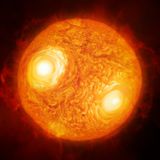
If dark matter is a particle, it should get inside red giant stars and change the way they behave
Dark matter makes up the vast majority of matter in the universe, but we can’t see it. At least, not directly. Whatever the dark matter is, it must interact with everything else in the universe through gravity, and astronomers have found that if too much dark matter collects inside of red giant stars, it can potentially cut their lifetimes in half.When stars like our sun near the end of their lives, they stop fusing hydrogen in their cores. Instead, the fusion takes place in a shell surrounding a dense core of inert helium – the leftover ash from that nuclear reaction. Over the course of...…Dark matter makes up the vast majority of matter in the universe, but we can’t see it. At least, not directly. Whatever the dark matter is, it must interact with everything else in the universe through gravity, and astronomers have found that if too much dark matter collects inside of red giant stars, it can potentially cut their lifetimes in half.When stars like our sun near the end of their lives, they stop fusing hydrogen in their cores. Instead, the fusion takes place in a shell surrounding a dense core of inert helium – the leftover ash from that nuclear reaction. Over the course of...WW…
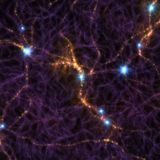
Simulations of the Universe are Getting Better and Better at Matching Reality
How can you possibly use simulations to reconstruct the history of the entire universe using only a small sample of galaxy observations? Through big data, that’s how.Theoretically, we understand a lot of the physics of the . We know that the universe used to be a lot smaller, denser, and hotter in the past. We know that its expansion is accelerating today. We know that the universe is made of very different things, including galaxies (which we can see) and dark matter (which we can’t).We know that the largest structures in the universe have , starting as just small seeds and building up...…How can you possibly use simulations to reconstruct the history of the entire universe using only a small sample of galaxy observations? Through big data, that’s how.Theoretically, we understand a lot of the physics of the . We know that the universe used to be a lot smaller, denser, and hotter in the past. We know that its expansion is accelerating today. We know that the universe is made of very different things, including galaxies (which we can see) and dark matter (which we can’t).We know that the largest structures in the universe have , starting as just small seeds and building up...WW…
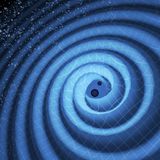
Physicists Figure out how to Make Gravitational Wave Detectors "Hear" 6x More Universe
Gravitational wave detectors are limited by fundamental quantum noise – an incessant “hum” that they cannot ever remove. But now physicists have recently improved a technique, called “squeezing”, that can allow the next generation of detectors to double their sensitivity.All the gravitational waves sloshing around the universe are incredibly weak. When they wash over the Earth, even the strongest waves wiggle no more than the width of an atomic nucleus. Our detectors, like, need to measure these tiny differences. But when they do, they run into the fundamental uncertainty of the universe...…Gravitational wave detectors are limited by fundamental quantum noise – an incessant “hum” that they cannot ever remove. But now physicists have recently improved a technique, called “squeezing”, that can allow the next generation of detectors to double their sensitivity.All the gravitational waves sloshing around the universe are incredibly weak. When they wash over the Earth, even the strongest waves wiggle no more than the width of an atomic nucleus. Our detectors, like, need to measure these tiny differences. But when they do, they run into the fundamental uncertainty of the universe...WW…
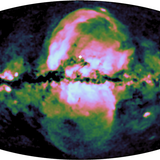
A second set of even larger bubbles has been found blasting out of the Milky Way's center
The first-ever all-sky X-ray map of our galaxy, provided by the ESA’s eROSITA spacecraft, reveals two massive bubbles. These bubbles extend for up to 50,000 lightyears above and below the Milky Way, and are believed to be remnants of a massive outburst that occurred millions of years ago.We’ve known for a long time that the inner core of the Milky Way can be a pretty violent place. Clusters of supernovae and the infernal work of our central supermassive black hole can wreak havoc, spreading devastation for light-years.And now, with a new all-sky X-ray map by the European Space Agency’s...…The first-ever all-sky X-ray map of our galaxy, provided by the ESA’s eROSITA spacecraft, reveals two massive bubbles. These bubbles extend for up to 50,000 lightyears above and below the Milky Way, and are believed to be remnants of a massive outburst that occurred millions of years ago.We’ve known for a long time that the inner core of the Milky Way can be a pretty violent place. Clusters of supernovae and the infernal work of our central supermassive black hole can wreak havoc, spreading devastation for light-years.And now, with a new all-sky X-ray map by the European Space Agency’s...WW…
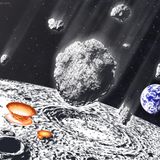
Asteroids Crashing Into Dead Stars are Helping Explain Where the Universe's Missing Lithium Went
What happened to all the lithium? The question has stumped astronomers for decades. While cosmologists have successfully predicted the abundance of the other light elements from the Big Bang, lithium has always come up short. Now, a team of astronomers may have found the reason: lithium-rich asteroids are smashing into white dwarves.As amazing as it sounds, we can use nuclear theory to understand the conditions of the universe . In that inferno, the lightest elements – hydrogen, helium, and lithium – got their start. Astronomers have been able to compare the predicted abundances of those...…What happened to all the lithium? The question has stumped astronomers for decades. While cosmologists have successfully predicted the abundance of the other light elements from the Big Bang, lithium has always come up short. Now, a team of astronomers may have found the reason: lithium-rich asteroids are smashing into white dwarves.As amazing as it sounds, we can use nuclear theory to understand the conditions of the universe . In that inferno, the lightest elements – hydrogen, helium, and lithium – got their start. Astronomers have been able to compare the predicted abundances of those...WW…
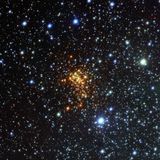
Massive stars get kicked out of clusters
The largest stars in the universe tend to be loners, and new research points to the reason why. Although massive stars are born in clusters of many smaller brethren, they quickly get kicked out, forced to spend their lives alone.Stars tend to come in clumps. That’s because when a massive cloud of gas and dust collapses to form stars, it has more than enough to form an entire cluster, containing both big ones and little ones.Once formed, the brightest stars in the cluster , leaving behind what’s known as an open cluster. Open clusters are bunches of newly-hatched stars that are no longer...…The largest stars in the universe tend to be loners, and new research points to the reason why. Although massive stars are born in clusters of many smaller brethren, they quickly get kicked out, forced to spend their lives alone.Stars tend to come in clumps. That’s because when a massive cloud of gas and dust collapses to form stars, it has more than enough to form an entire cluster, containing both big ones and little ones.Once formed, the brightest stars in the cluster , leaving behind what’s known as an open cluster. Open clusters are bunches of newly-hatched stars that are no longer...WW…
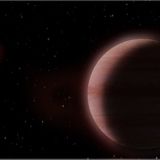
An exoplanet has been found for the first time using radio telescopes
Astronomers have found an extrasolar planet around a main sequence star. Which isn’t a big deal. With a radio telescope. Which is.Over the past couple decades astronomers have spotted thousands of exoplanets using a variety of techniques. There’s the ever-popular transit method, championed by observatories like Kepler and TESS. And there’s also a , which closely monitors the light from a distant star.And then there’s astrometry.Astrometry is the technique of watching a star wiggle back and forth as it’s tugged by the gravity of any orbiting planets. It’s a very precarious measurement...…Astronomers have found an extrasolar planet around a main sequence star. Which isn’t a big deal. With a radio telescope. Which is.Over the past couple decades astronomers have spotted thousands of exoplanets using a variety of techniques. There’s the ever-popular transit method, championed by observatories like Kepler and TESS. And there’s also a , which closely monitors the light from a distant star.And then there’s astrometry.Astrometry is the technique of watching a star wiggle back and forth as it’s tugged by the gravity of any orbiting planets. It’s a very precarious measurement...WW…
- Total 7 items
- 1